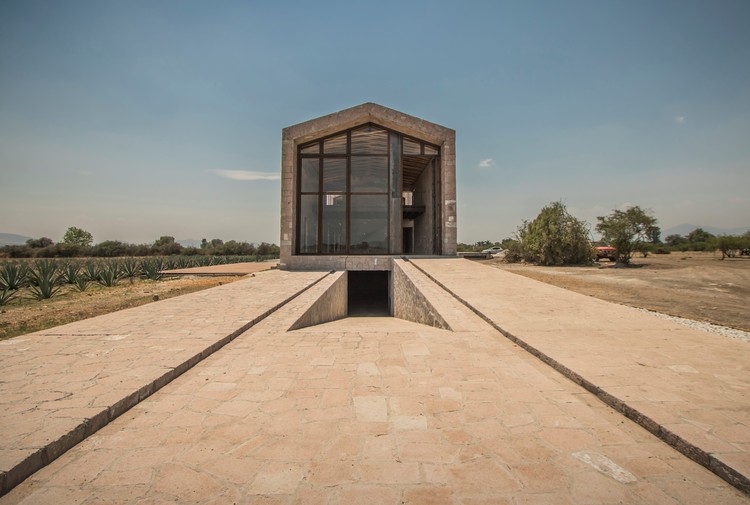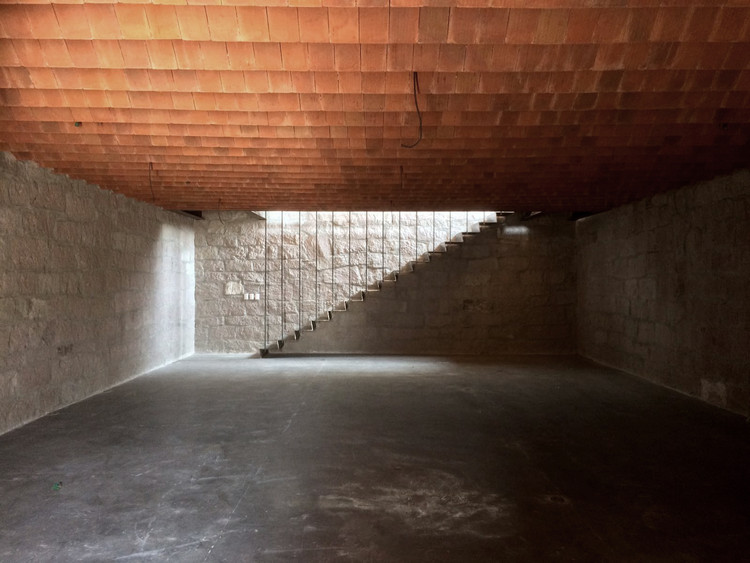

Text description provided by the architects. Rancho Cebu is located in Tlacolula de Matamoros, in the valley of Oaxaca, this region is recognized by his mezcal production. The project that is part of Grupo Amantes has an area of 3,500 square meters distributed in 3 levels placed in a 10 hectares maguey seeding. One of the stronger bets of the project was to incorporate handicraft work both to produce the mezcal and for the building itself. Inside the whole architectural complex, besides the distillery and maguey field, we can find an elevated tank designed by oaxacan artist Luis Zarate, a wood-fired oven and an alembic for mezcal production.



The complex enjoys wonderful sight to prehispanic vestiges of Yagul and the mountains that surround the valley. The building is in the middle of the 10 hectares lands, to take advantage of the visuals of the environment. In the side plan we can notice the intention of join the elevated tank, the pit of the land and the local water storage tank with a conceptual water line. The construction began with the basement, which is the cellar of fermentation and ageing, almost 3 meters under the ground level, this space allows the conservation of the perfect temperature to preserve the mezcal. Subsequently we continue with the basement of the entire complex with masonry strip foundation along 87 meters, once the basement was over we start with the pink quarry masonry walls these ones were reinforced with concrete columns to guarantee the structural safety of the building. The slab of the upper floor was made of welded I-shape beams with wooden planks that support a concrete firm. The structure of the roof is a particular form of bamboo with plywood covered by asphalt waterproofing and handmade clay tiles. This type of structure is flexible and very suitable for seismic areas such as Oaxaca.



The main objective being to reduce as much as possible the environmental impact beginning for the construction until the last step in the mezcal production. Gray and black water treatment plant which combine the organic waste of the mezcal production (all these elements are integrated into a unique system of biodigestors this allows to clean the organic residues, avoiding the contamination of groundwater). The project bets on the handcrafted production as a method of humanization of the architecture. In every stone, brick and bamboo, in every square meter of building, we find the skill of the main stone-cutter, bricklayers, carpenters, blacksmiths and other persons who reached for the successful materialization of the project.
For more visit Grupo Amantes.























